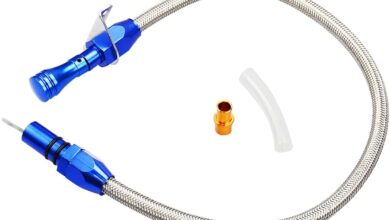How To Choose The Right Grappling dummy for your needs

Grappling dummy for your needs
Choosing the right grappling dummy for you is critical. The best grappler in the world can’t be the best without one! Choosing the wrong grappling dummy could lead to serious injuries and hinder your training for long periods of time, which we don’t want.
If you’re new to the world of martial arts, you might be a little confused when it comes to picking out your first grappling dummy. If you’re wondering what a grappling dummy is, well, in short, they are training tools to help with submission holds and certain strikes in the art of Brazilian Jiu-Jitsu (BJJ). Grappling dummies can also come in handy for those who train in Judo, wrestling or American Freestyle, or Greco-Roman wrestling.
When you start looking for a BJJ training dummy, there are many different types of dummies and options within each type. Before making your purchase, you should know a few things so you make sure you get the right one for your requirements. This guide will take you through the different types of dummies available, the advantages and disadvantages of each type, the features you should be looking for, and identifying what size of training opponent best suits your needs.
Grappling dummies are an excellent way to improve your Jiu-Jitsu. There are a large number of them on the market, but not all of these offer the same quality and usability. So how do you know which grappling dummy is right for you?
What’s a grappling dummy?
A grappling dummy is a device you can use to practice wrestling. There are lots of them, and they are mostly made of wood or foam rubber. They look like people: they have arms and legs and heads.
The point of grappling dummies is to simulate the behavior of a real human body. The most important thing to know about a human body is that it has inertia: it won’t stop moving when you apply force to make it move in one direction, as long as you don’t apply force in the opposite direction.
When you wrestle, you want your opponent’s body to move toward yours even if you don’t want it to stop moving. If two bodies are touching, their inertia can cause them both to keep going forward until one of them stops. But if the two bodies are apart, then one of them will be able to stop without affecting the other; you can take advantage of that by pushing your opponent in one direction, so his body will follow you but his feet will stay where they are.
So if you want to pull your opponent toward or push him away from you, your best bet is not to try too hard with your own body. Instead, throw yourself at him.
How to effectively use it?
If you’re going to learn self-defense or karate, it’s helpful to know something about the techniques that some people use effectively. The most commonly used techniques are what we call “grappling dummies” (or “hugging dummies,” “kicking dummies,” “fencing dummies,” etc.) These are objects, typically stuffed with cloth, foam rubber, or some other soft material, that simulate the human body.
The idea is to visualize the opponent in front of you and try to move him as if he were an actual opponent. This allows you to get a feel for how his attacks work and what his movements would be like if you were actually fighting him.
how to tie jiu jitsu belt? This is definitely one of the most common questions beginners have when they join a BJJ academy or start training with a friend. Unfortunately, there are no simple answers and the best way to solve this issue is to go and ask your coach how he expects you to tie your belt.
What to look for when you buy one?
Buying a grappling dummy is one of those things that has some obvious benefits, and some less obvious ones. The obvious ones are obvious: it’s useful for learning techniques, and it’s useful as an exercise in strength. And the less obvious ones are also useful: learning to grapple is a good way to learn how to stay calm in stressful situations. It’s also a good way to learn how to move through space well.
Learning how to grapple is pretty easy, but finding the right kind of grapple dummy can be tricky. You want the dummy that gives you just the right amount of resistance, so you can start out learning how to break it without too much strain on your arms, and then as you develop your technique you can make the dummy harder.
You also want a dummy that is light enough that you can carry it around easily, but not so light that you feel like you’re carrying a feather or something. You don’t want a toy. This can be hard to find. It probably helps if you know what kind of grappling techniques you’re interested in trying out, but the great thing about grappling dummies is that they work for any technique -once you learn how to use them effectively, they essentially become training partners for yourself.





